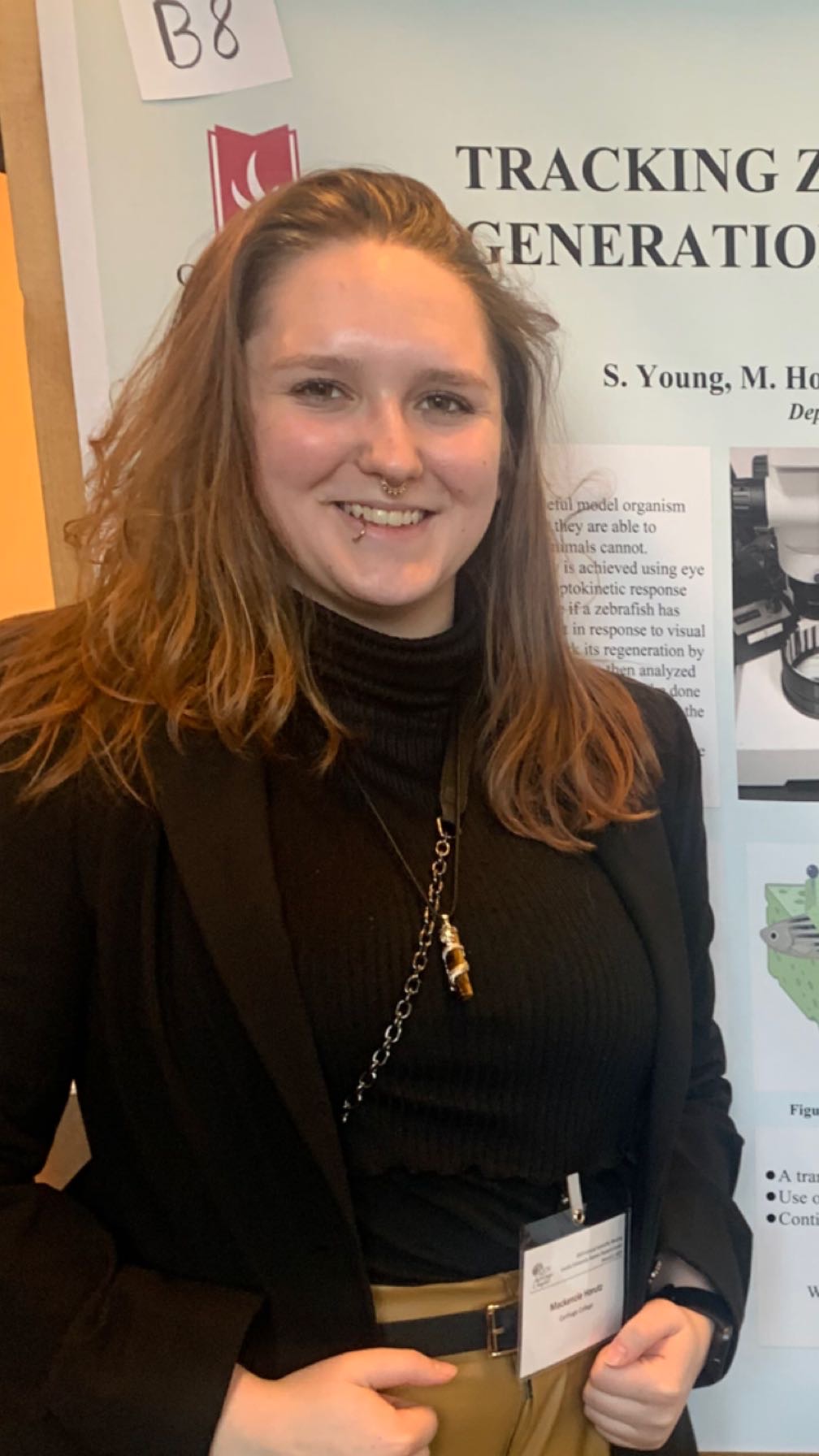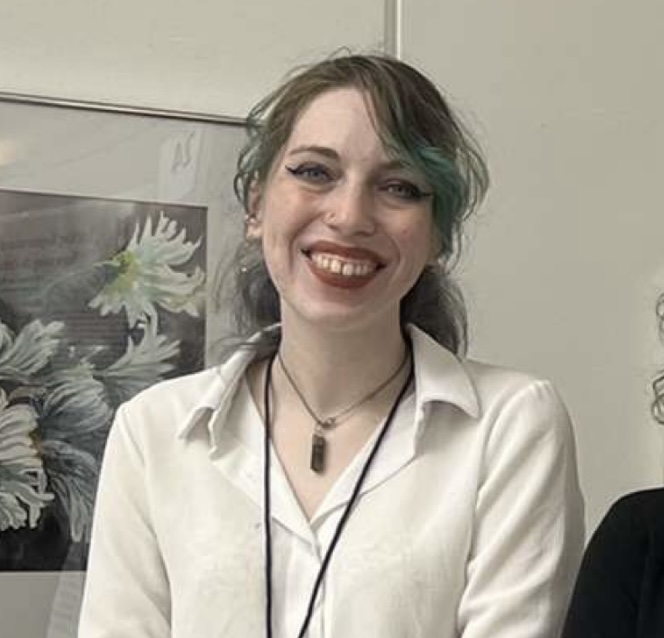Celebration of Scholars
#43: Tracking Regeneration of the Zebrafish Optic Nerve Using the Optokinetic Response
 Name:
Sarah Young
Name:
Sarah Young
Major: Neuroscience
Hometown: Kenosha WI
Faculty Sponsor: Steven Henle
Other Sponsors:
Type of research: SURE
Funding: SURE nih grant
 Name:
Mackenzie Horutz
Name:
Mackenzie Horutz
Major: Neuroscience
Hometown: Rockville IN
Faculty Sponsor: Steven Henle
Other Sponsors:
Type of research: SURE
Funding: SURE nih grant
 Name:
Claire Wulf
Name:
Claire Wulf
Major: Neuroscience
Hometown: Hudson wi
Faculty Sponsor: Steven Henle
Other Sponsors:
Type of research: SURE
Funding: SURE nih grant
Abstract
Zebrafish have eyes similar to humans making them a useful model organism for studying vision. However, zebrafish are different in that they are able to regenerate their optic nerve after injury, which most other animals cannot. Measuring vision in people who have communicative ability is achieved using eye charts. Because fish cannot use an eye chart, we utilize the optokinetic response (OKR) that is present in virtually all vertebrates to determine if a zebrafish has eyesight. The OKR is observed by monitoring eye movement in response to visual stimuli. By injuring the optic nerve on a zebrafish we can track its regeneration by measuring the return of its OKR. Recorded videos of the OKR are then analyzed through a deep learning software called DeepLabCut. The analysis could be done manually, but computational methods save significant amounts of time. This provides insight to the functional process of regeneration, whereas previous work has focused on the anatomical process. Understanding the functional regeneration in zebrafish will aid in developing treatment for humans with optic nerve injuries.
